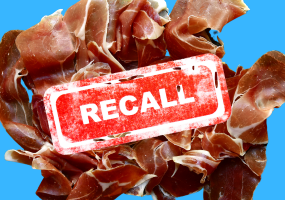Since news about the Chipotle food poisoning broke, a lot of people became more concerned about the food they eat. The public began to realize that even renowned brands and giant food chains can also be the breeding ground for the next food related fiasco in town.
Because of the two outbreaks of Norovirus (a virus that causes diarrhea, vomiting, body pains and fever among others) in Simi Valley and Boston, two E. coli outbreaks, and one Salmonella outbreak in Minnesota, Chipotle is now facing rapid drops in their food revenue, a decline in their stock value, a criminal investigation and a lawsuit.
So how can we really avoid food poisoning? According to The Forbes website, if you see even one of this red flags, eat somewhere else!
- Employees' Hygiene: Do they wash their hands? Wear Hairnets?
Remember, the hygiene of the employees can determine the cleanliness of your food for the sole reason that they handle it. Does the establishment provide them with a sink, soaps and faucet? Do the employees wear hairnets? What about face masks? These are not optional. In fact, these are valid precautionary measures to avoid unnecessary contact or gross whatnots. Be mindful enough. You don't get to see what's behind that "Authorized Persons Only" door.
- Sick employees
- Dirty or ill-equipped bathrooms
Usually, bathrooms have the cleaning checklist for employees. You can use that to assess if it is really sanitary or not. Keep in mind that a dirty rest room could be the source of germs that could be transferred to your food. If the comfort rooms are dirty, we can only hope that the kitchen is clean.
- Dirty utensils, plates, and cups
If the utensils were not properly washed, distilled and stored, they could grow harmful bacteria. Remember that "Food poisoning" doesn't just come from food.
- In fact, Dirty anything
Restaurants feed a lot of people, their responsibility does not end in serving good food, but ensuring the safety and health of their customers. It is their duty to be as clean as they can be. Never ever risk eating in a restaurant where you can spot cobwebs, dust or even insects. Yikes.
- Overflowing garbage cans
- Hidden kitchen
- Poor inspection rating
Aside from checking out their menu, be sure to locate their inspection certificate, displayed usually near the front of the restaurant.
- Employees who refuse to tell you how a food is preparedor change/switch ingredients
- Suspicious looking food
"Norovirus and other pathogens such as E. coli are essentially "invisible" and do not change the taste or appearance of the food." However, food that has been sitting out too long (and therefore are at greater risk for contamination) may change appearance.
- Other people have gotten sick after eating at a restaurant
Learn from others. "People don't tend to report food poisoning incidences to the authorities, so the number of reported food poisoning cases probably grossly underestimates the actual number of cases."









